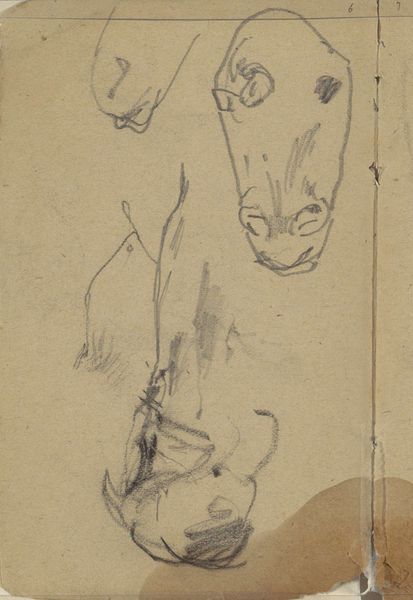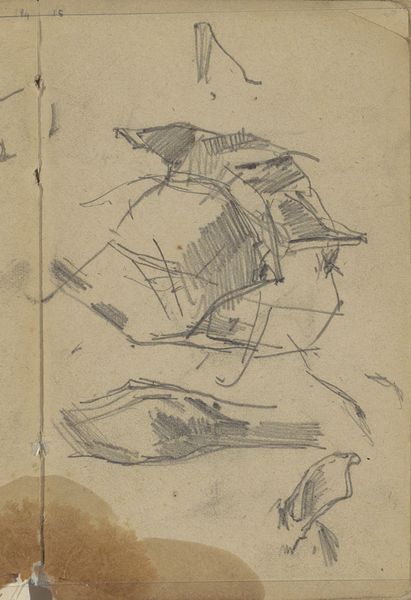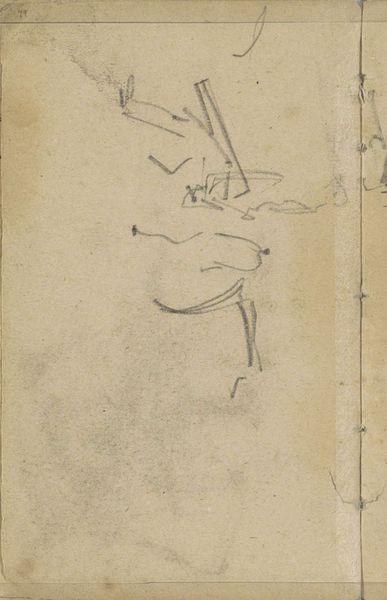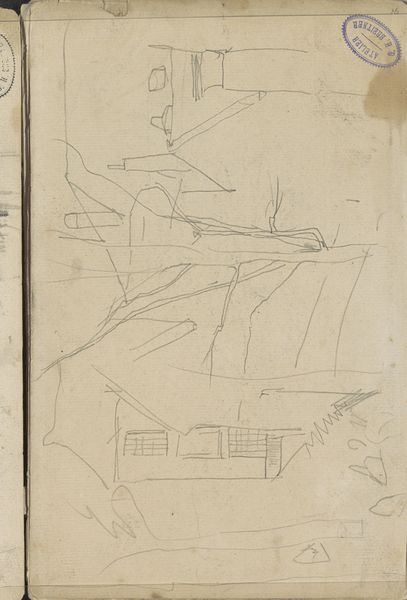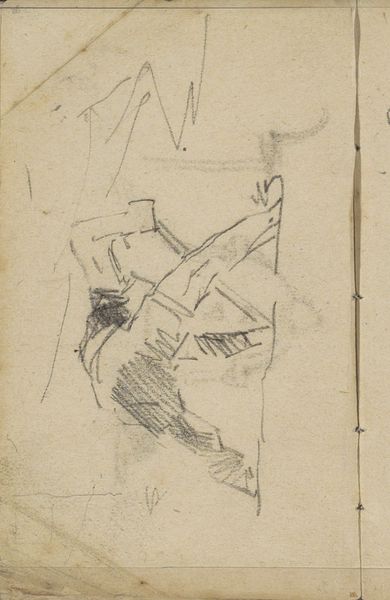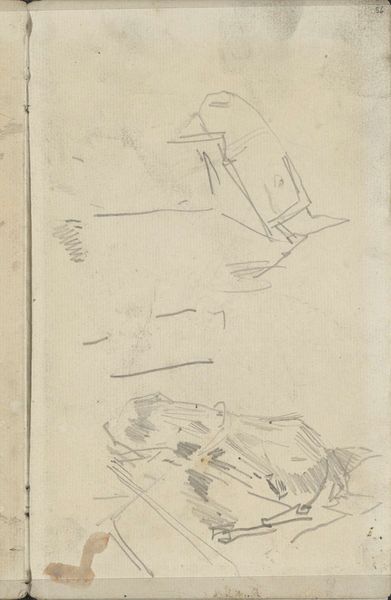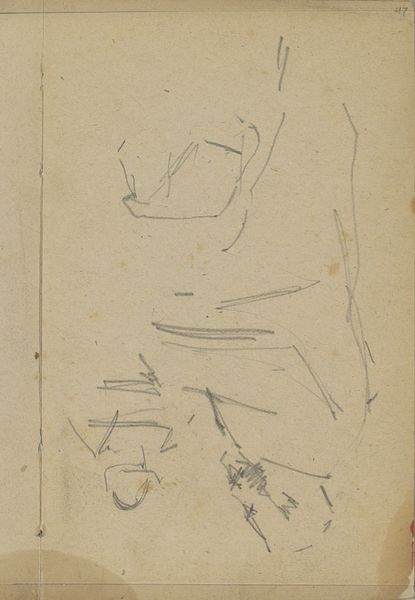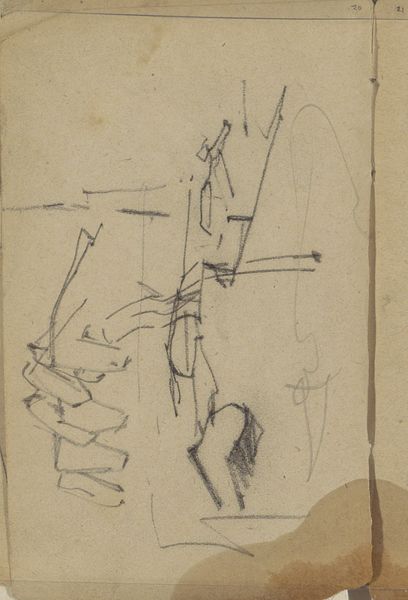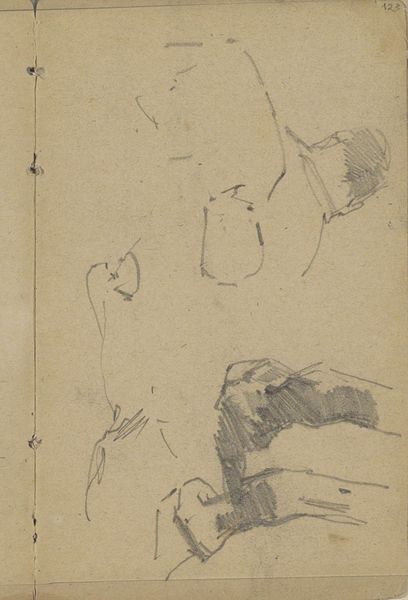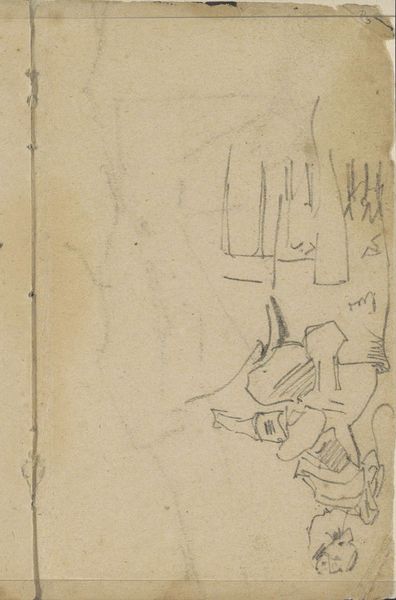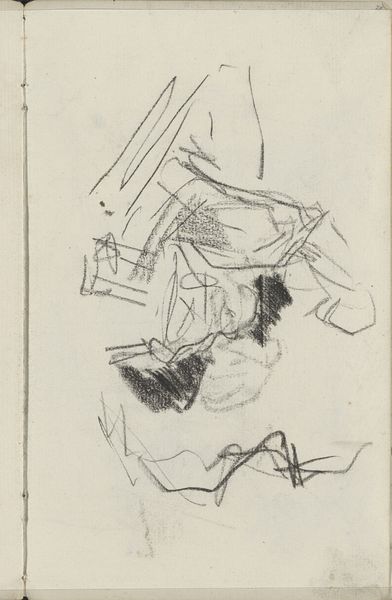
drawing, paper, pencil
#
portrait
#
drawing
#
figuration
#
paper
#
pencil
#
realism
Copyright: Rijks Museum: Open Domain
Curator: Let’s turn our attention to "Studieblad," a work on paper executed in pencil by George Hendrik Breitner between 1881 and 1883, currently housed in the Rijksmuseum. What’s your immediate impression? Editor: Chaos. An energetic but fractured collection of lines forming partial images. The varying pressure of the pencil creates depth, even within the sketch-like nature of the piece, suggesting movement. Curator: Indeed. These are studies, after all, explorations of form. Looking at it through a lens of realism, one might say Breitner attempts to capture fleeting moments in the everyday lives of working-class individuals in Amsterdam. How might the fragmentary nature contribute to a broader narrative? Editor: The incompleteness mirrors the ephemerality of modern life—a key theme for artists like Breitner. Consider how the stark, almost brutal lines evoke the raw, unsentimental nature of Realism itself, devoid of romanticism or idealization. Curator: Right. This portrayal counters dominant, often bourgeois, narratives. It seeks to present a social reality, which often includes fragmentation, uncertainty, and struggle. Each incomplete image on this page serves as a powerful fragment within a larger, marginalized narrative. Editor: Yes, there’s a structural rawness, particularly in the figure at the bottom, which is intriguing. Breitner plays with positive and negative space, allowing the texture of the paper to become an active component in defining the form, emphasizing its stark immediacy. Curator: The deliberate choice to depict these studies hints at the unvarnished reality Breitner aimed to capture, offering an insight into the lives of those frequently excluded from mainstream historical portrayals, even questioning the value system of his contemporaries. Editor: So true. And through careful examination of line and form, one can see the foundation of his later paintings emerging, solidifying Breitner's position within the artistic evolution of his time. Curator: These rapid sketches offer a glimpse into Breitner’s method, as well as a window onto a critical approach to representation that continues to resonate today. Editor: Absolutely. It leaves us to ponder how our view on this raw state drawing helps reframe historical discourse surrounding artistic representation.
Comments
No comments
Be the first to comment and join the conversation on the ultimate creative platform.
